
The original fusion cuisine – think borscht, sizzling steaks, and pineapple buns – has stood the test of time in Hong Kong
- Western-style snacks and dishes adapted to the tastes of Hongkongers were a novelty in the 1970s and ’80s but became firm favourites and are still eaten today
- The ‘bing sutt’ cafes and restaurants that serve them have adapted their menus to suit the more discerning tastes of a younger generation of customers
Giant trays of freshly baked buns and bread are whisked from the back kitchen to the display counters at Kam Wah Cafe in Mong Kok, in the heart of urban Kowloon in Hong Kong. A tantalising buttery aroma wafts through the room, as customers line up outside the bing sutt (“ice room”), which specialises in drinks and snacks, eager to order their favourite pastries.
Bina Chan, wife of the owner, is inundated with orders. She dabs chilled butter in the popular pineapple buns – named for their look, not because they contain pineapple – before handing them to customers.
Instead of blindly copying Western baking recipes introduced by the British, Hong Kong restaurateurs showed a flair for adapting them to give a local riff on the originals, she says. “The pastries sold in bing sutts and cha chaan tengs are mostly a cross between Western and Chinese recipes,” Chan says.
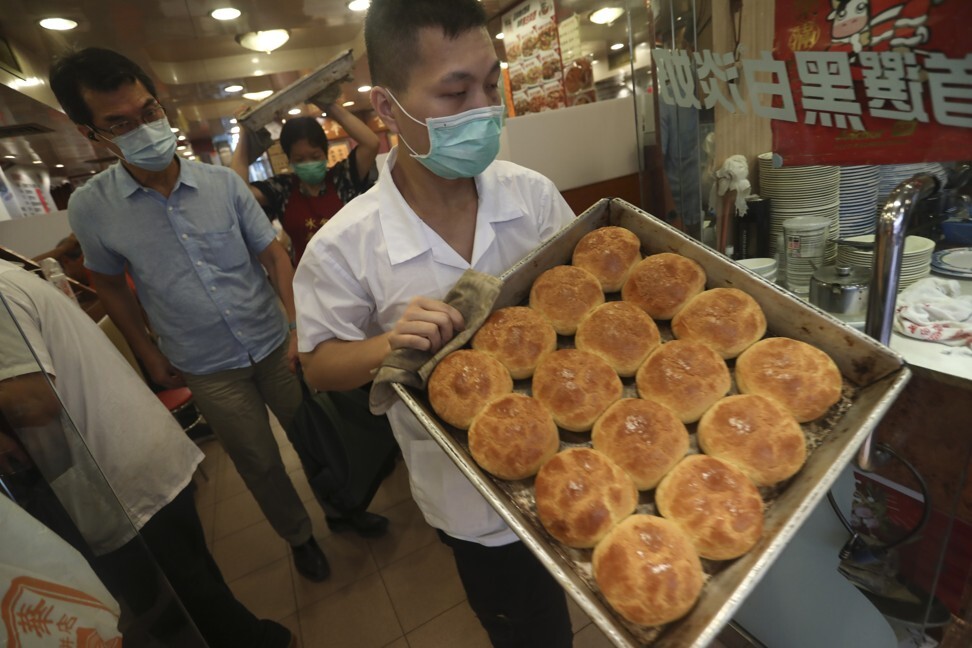
The cafe has, since it opened, imported the butter, cream, milk and milk powder it uses. Most establishments were reluctant to source ingredients from Europe due to the cost, says Chan.
“We stick with the same suppliers, which we picked because we strive to ensure consistent taste and quality,” she adds.
Chan says her husband, who started the business in the ‘70s with his friends, is very particular about the taste and texture of the cafe’s award-winning milk tea, and wanted to craft a Hong Kong iteration of the British classic drink. The black tea’s smell, colour, level of astringency and the proportion of tea to condensed milk are fastidiously calculated, she says.
Another popular dish is French toast, and many of the customers order it with a lava-like cheese filling.
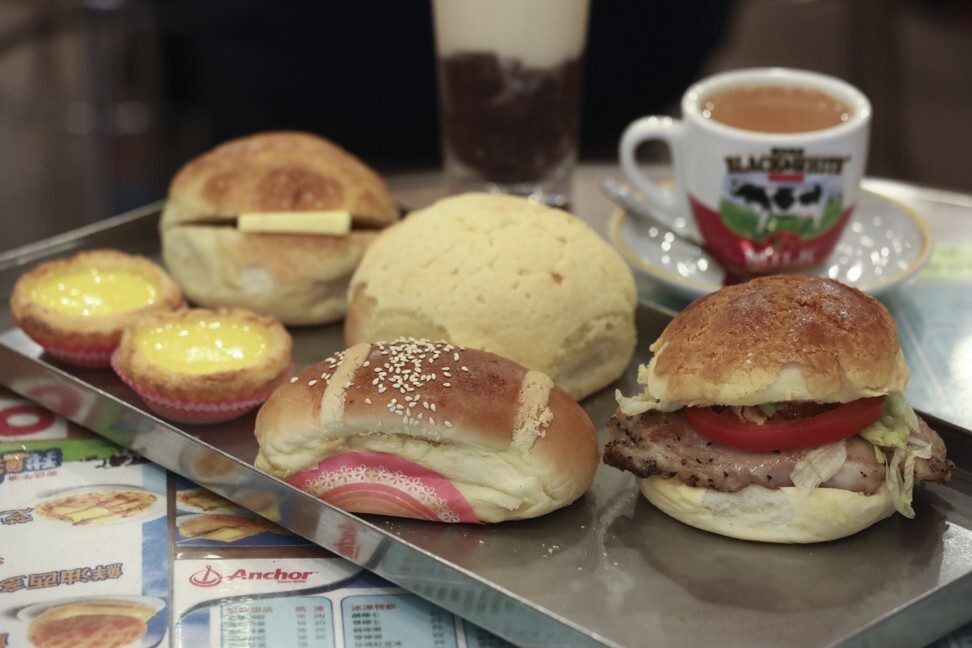
Chan and her husband have committed their lives to Kam Wah Cafe. “We’ve witnessed it going from a quiet area to seeing the addition of two chic shopping malls and a footbridge, to the construction of rail lines. In the past, we yelled orders to the kitchen and we charged by counting colour-coded platters. The store is loaded with memories,” she says.
The Western influence on Hong Kong’s food scene is apparent not only in pastries and milk tea, but in more substantial dishes, too.

In To Kwa Wan, a working class neighbourhood to the east of Mong Kok, Goteborg restaurant is wedged between numerous street stalls. The no-frills establishment never lacks for customers.
“It started in 1982 at this same location. People who used to live in the neighbourhood have moved elsewhere. But many of them still come back here often, just for the grilled dish on a hot iron plate, which sticks in their memories,” says restaurant manager Wong Yun-keung.
Western restaurants such as this began opening in the 1980s, and for Hongkongers they were a novelty. The businesses did not actually cater to Hongkongers; they opened to serve expats and foreign sailors. Steaks, butter and cream were among the exotic elements they brought to the city’s primarily Chinese dining scene.
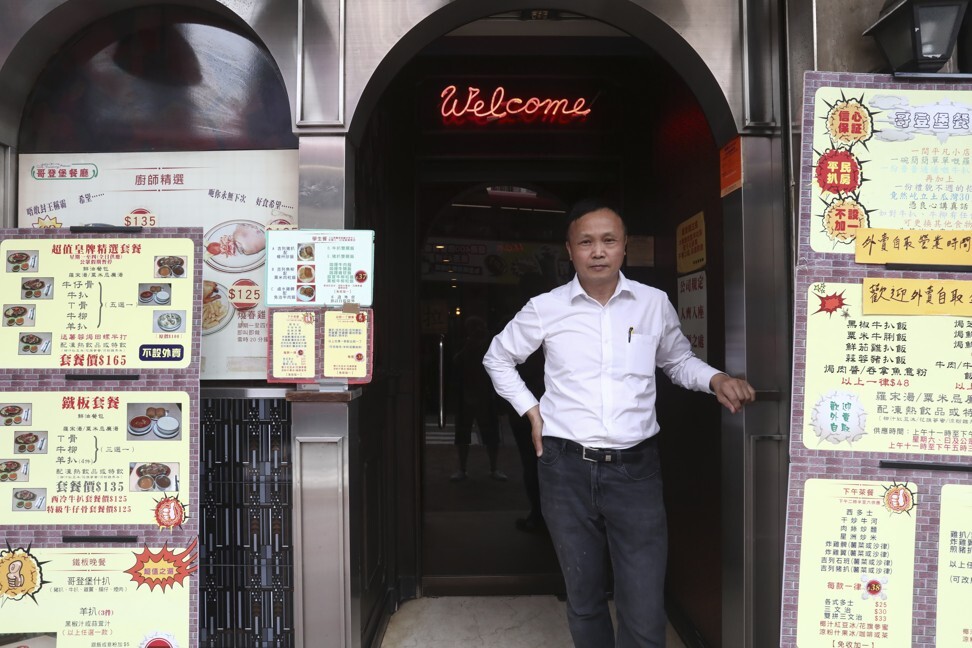
“The concept of ‘Porterhouse’ was new to Hong Kong people at that time, but created a buzz in the city, even though it was not accessible to everyone. They were regarded as a preserve for the better-off families,” says Wong.
The sirloin and T-bone steaks and the lamb racks on the menu today have been served since Goteborg restaurant opened. The meat is imported from New Zealand, and at the time this put the dishes out of the price range of most locals.
To tempt them, clever cooks adapted Western recipes. One of the popular dishes at Goteborg is steak served on a blazing hot cast iron plate, which sizzles and smokes temptingly as it’s carried from kitchen to table. Nobody makes a fuss about it today, but back then it was a novelty, adding a theatrical touch to the meal.
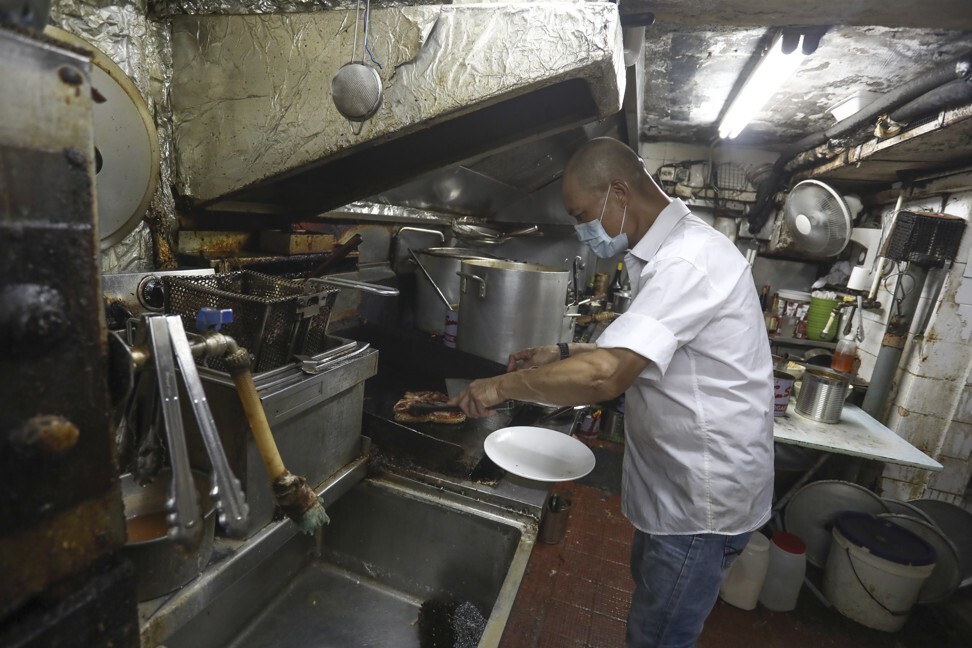
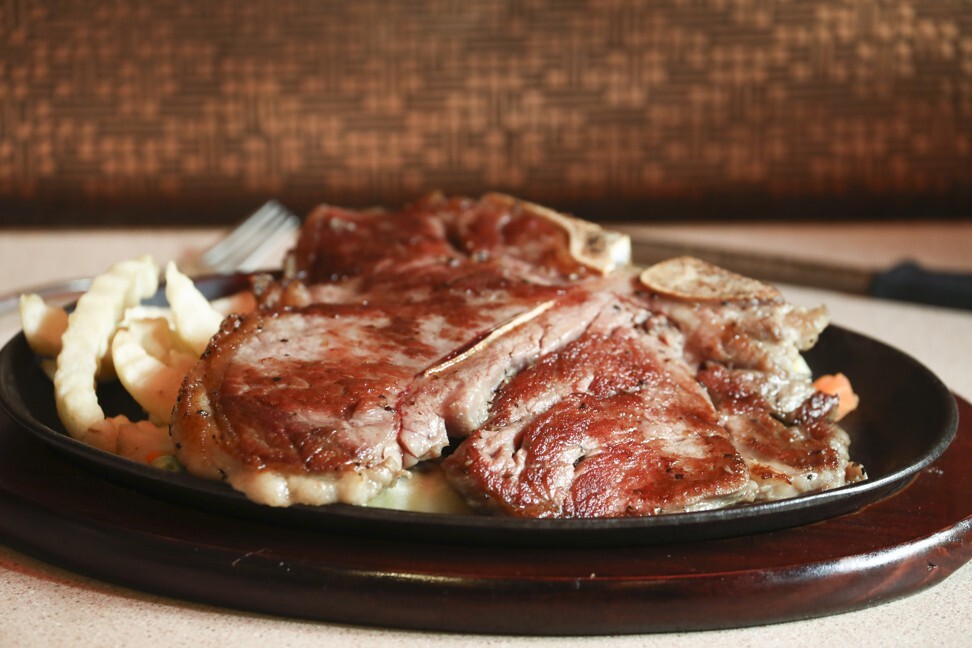
Wong, born into a working-class family, and did not taste steak himself until he was around 17 years old.
“I went to a Western food restaurant in Mong Kok with friends. I didn’t even know how to use a knife and fork,” he says. “I had the Cantonese-style steak, which was served grilled on a hotplate.”
Since the Goteborg first opened, its chefs have constantly played with recipes according to the availability of ingredients and to local customers’ evolving tastes and expectations of Western food. Menus in the past were “actually more diverse and inclusive”, says Wong, compared to the streamlined menu of today, which features only a selection of old favourites.
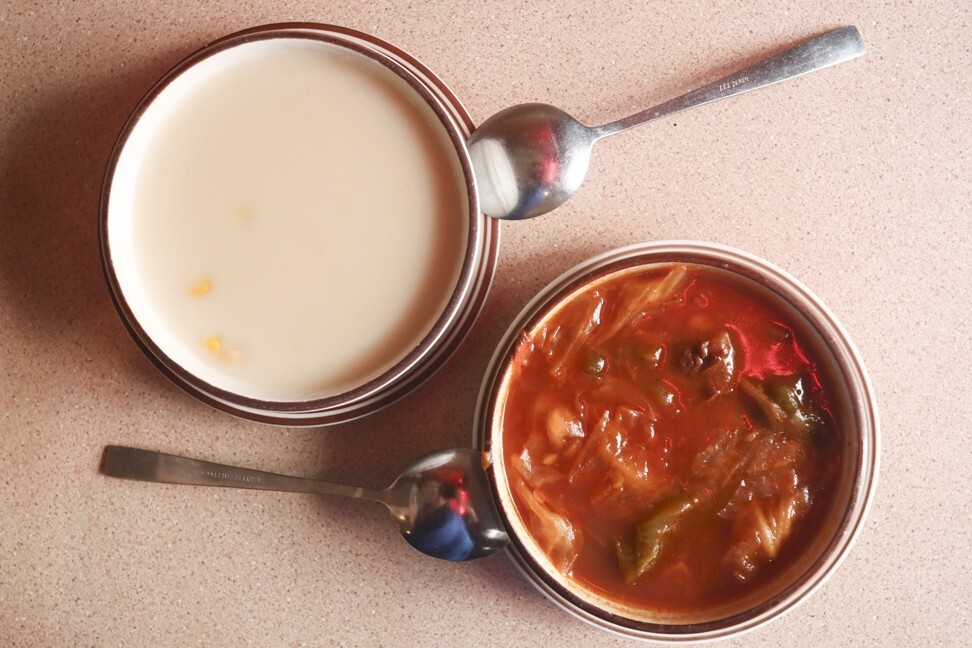
For example, the old menu featured seafood dishes prepared in the same vein as its beefsteak and lamb chop.
In the 1960s and ’70s, with trade between Hong Kong and Western countries flourishing, imports of foreign goods rose. Locals called them loi lo fo in Cantonese, meaning “goods from foreign countries”.
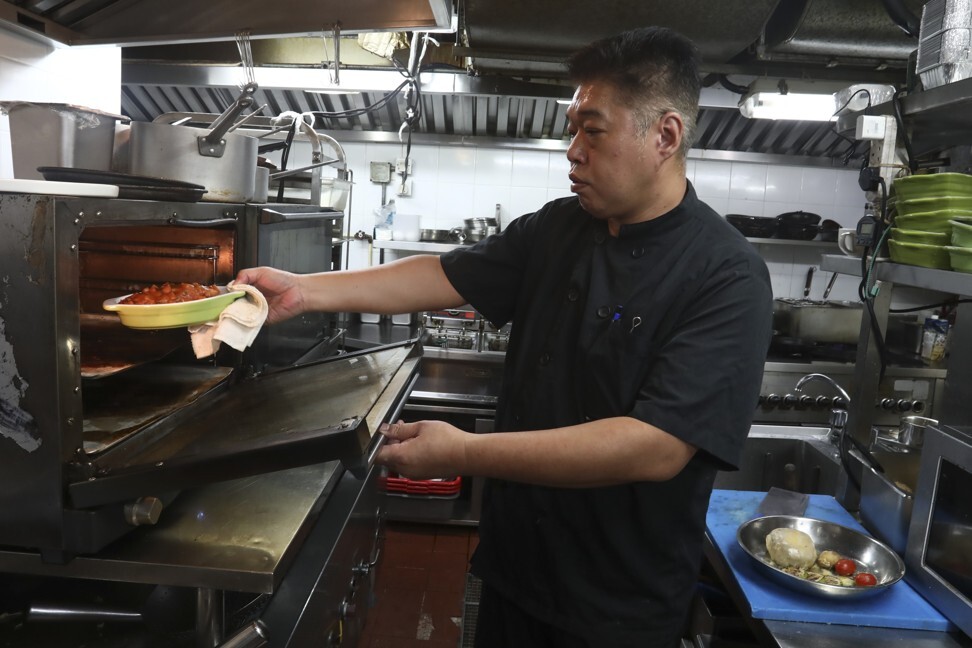
Among the dishes on its menu is 66 beef Wellington – a generous chunk of seared beef tenderloin with foie gras pate and ham, encased in puff pastry, deep-fried and then baked. It’s bursting with beefy, succulent, rich and buttery flavours and crusty texture. Back in the ’60s and ’70s, it was the epitome of sophistication and luxury.
Another dish from that time combines pork chop and sunny-side-up eggs (from the West), fried rice (a Hong Kong staple) and tart tomato sauce, with everything baked together – a fusion that the older generations find captivating.
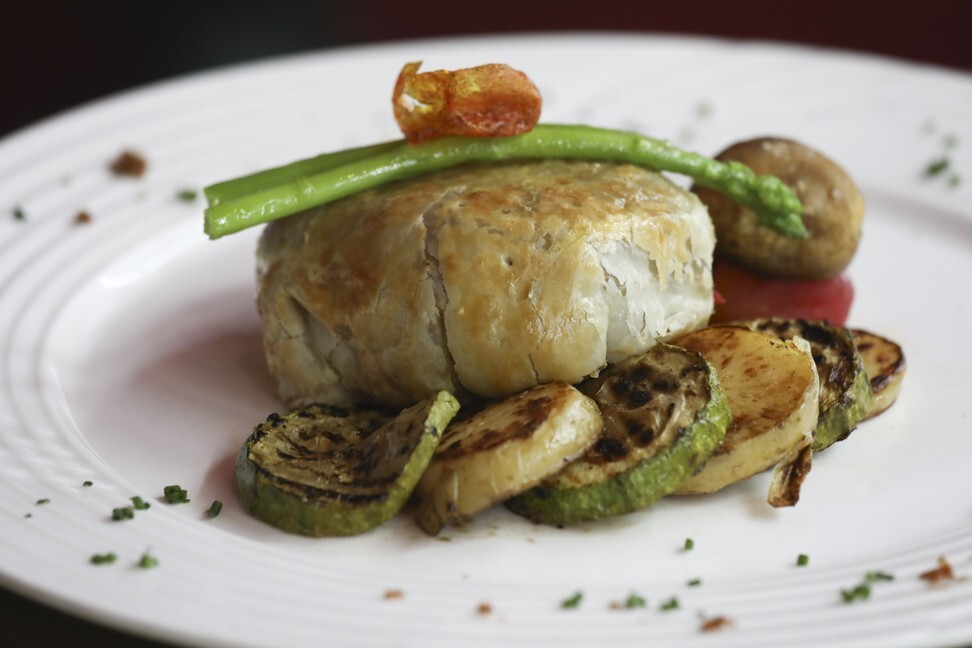
Prawn toast – available at dai pai dongs and cha chaan tengs today – was also something new back when Western restaurants started opening.
Today the prawn toast is adapted for modern tastes, says Joan Law, Loyal Dining’s director of marketing and communication. “We fine-tune the recipe, to make it less greasy. Customers today are health conscious; it’s different from the past when food was scarce and oily dishes were considered nourishing.”
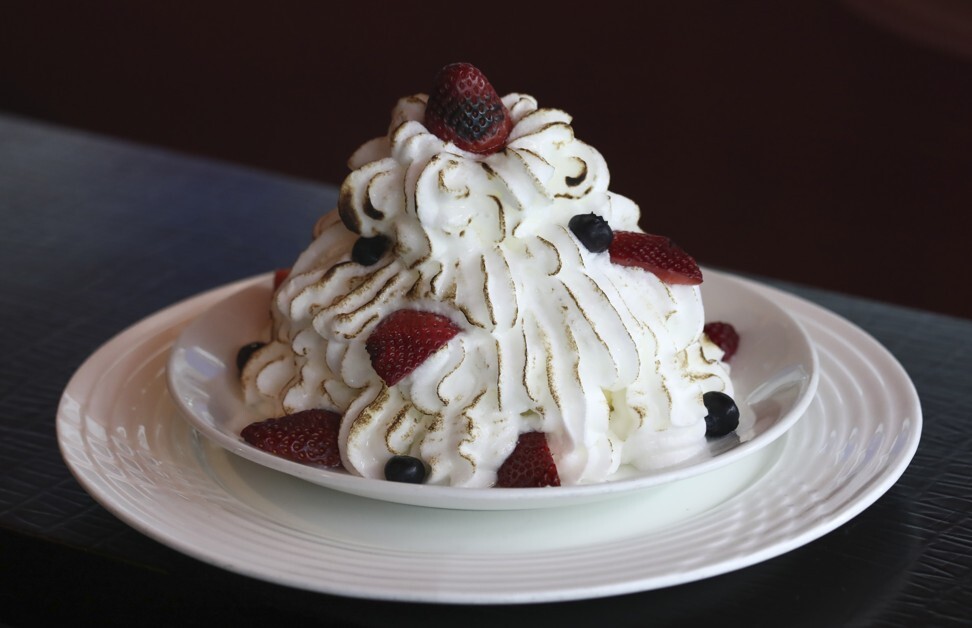

It’s fashioned into a snow mountain, with meringue outside and ice cream and chiffon cake inside. The waiting staff will drench it with alcohol and flambé it tableside, to “oohs” and “aahs” from the diners.
“It’s been around in town since the emergence of Western eateries,” says Law. Remembering her first time visiting a Western diner in her childhood, Law says: “It was a classy restaurant called Red Brick in Causeway Bay, which regrettably, doesn’t exist any more.”
She vividly remembers the visit being at Christmas. “Our family of six decided to have a special celebration. We ordered steaks, borscht, souffle and fizzy drinks.”

It was in the 1990s, Law says, when people rarely visited Western restaurants because of the cost. “HK$200 per head – for a family of six like mine, was nothing short of an indulgence.”
Today, these Western-Chinese fusion restaurants serve up as much nostalgia as they do time-tested dishes that have evolved to appeal to the discerning palates of a new generation of Hongkongers.
Kam Wah Cafe: 47 Bute Street, Prince Edward, tel: 2392 6830
Goteborg restaurant: 440 Ma Tau Wei Road, To Kwa Wan, tel: 2715 1639
Loyal Dining: 5 Tonnochy Road, Wan Chai, tel: 3125 3000
